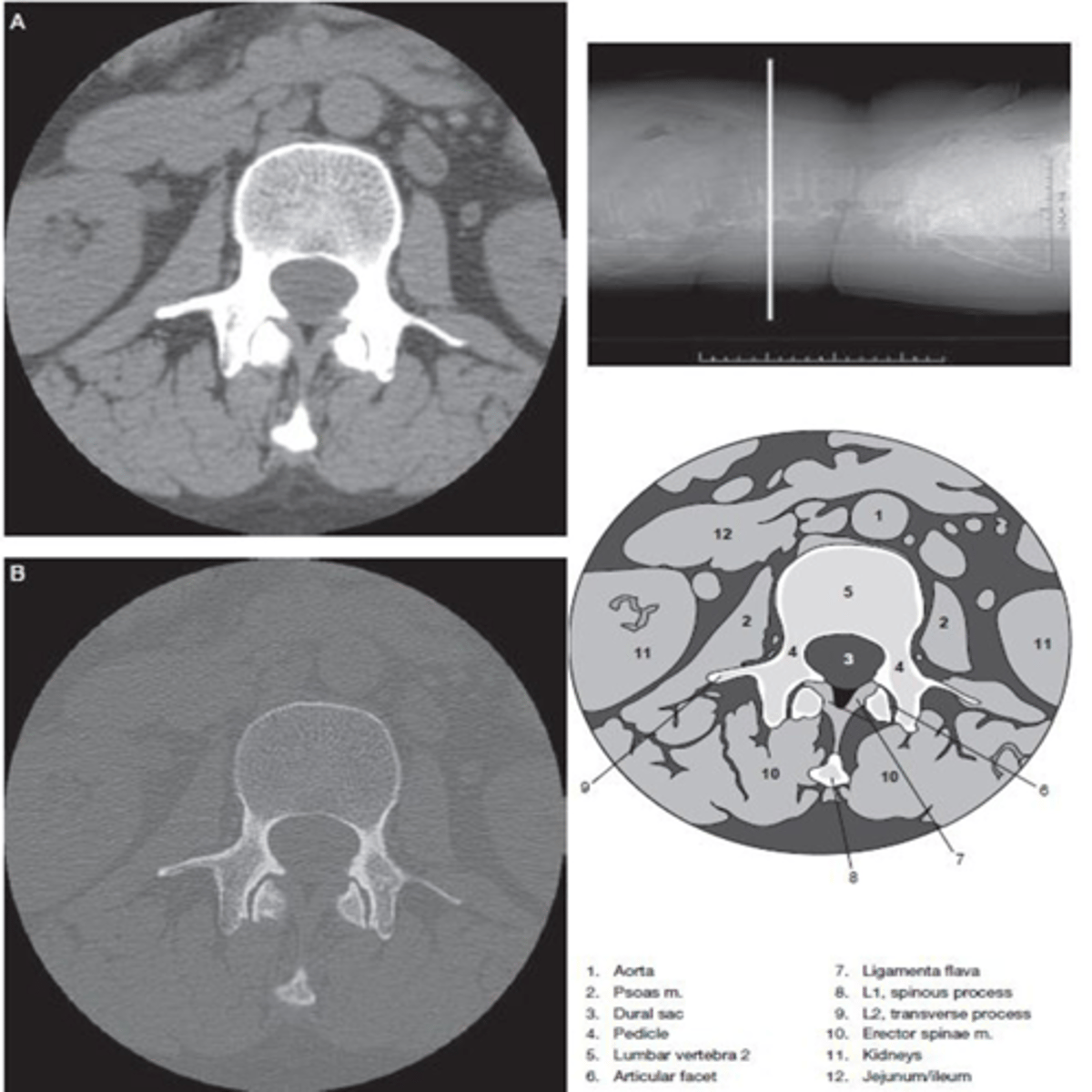Week 1b: Computer Tomography (CT) Imaging
1/16
There's no tags or description
Looks like no tags are added yet.
Name | Mastery | Learn | Test | Matching | Spaced |
|---|
No study sessions yet.
17 Terms
Who invented CT Scan?
Godfrey Hounsfield utilized mathematical formulas developed by Alan Cormack to reconstruct images from digital signals
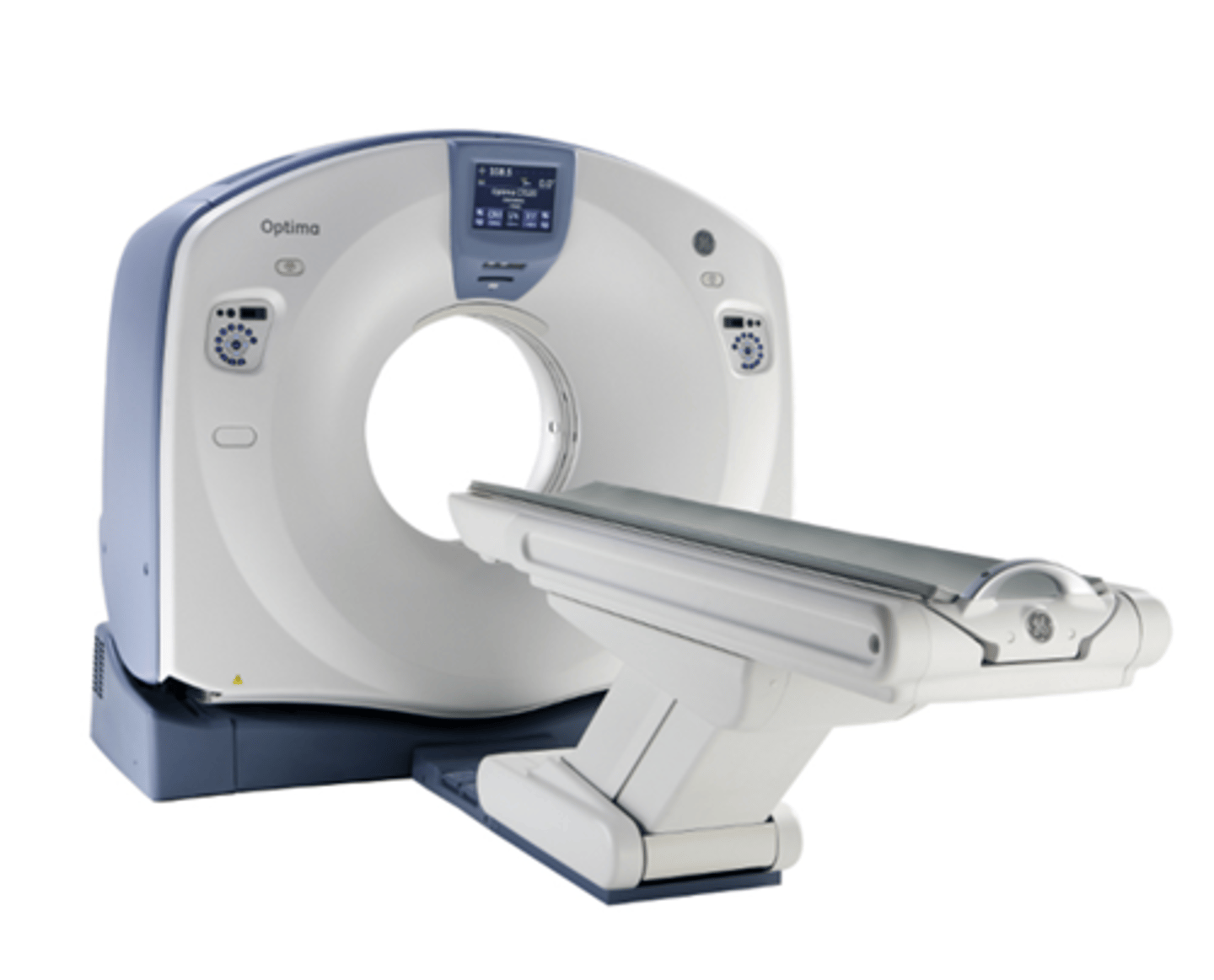
How does CT work?
CT merges X-ray technology with advanced computer post-processing to provide detailed digital cross-sectional images of the body relatively free from superimposition of the different tissues
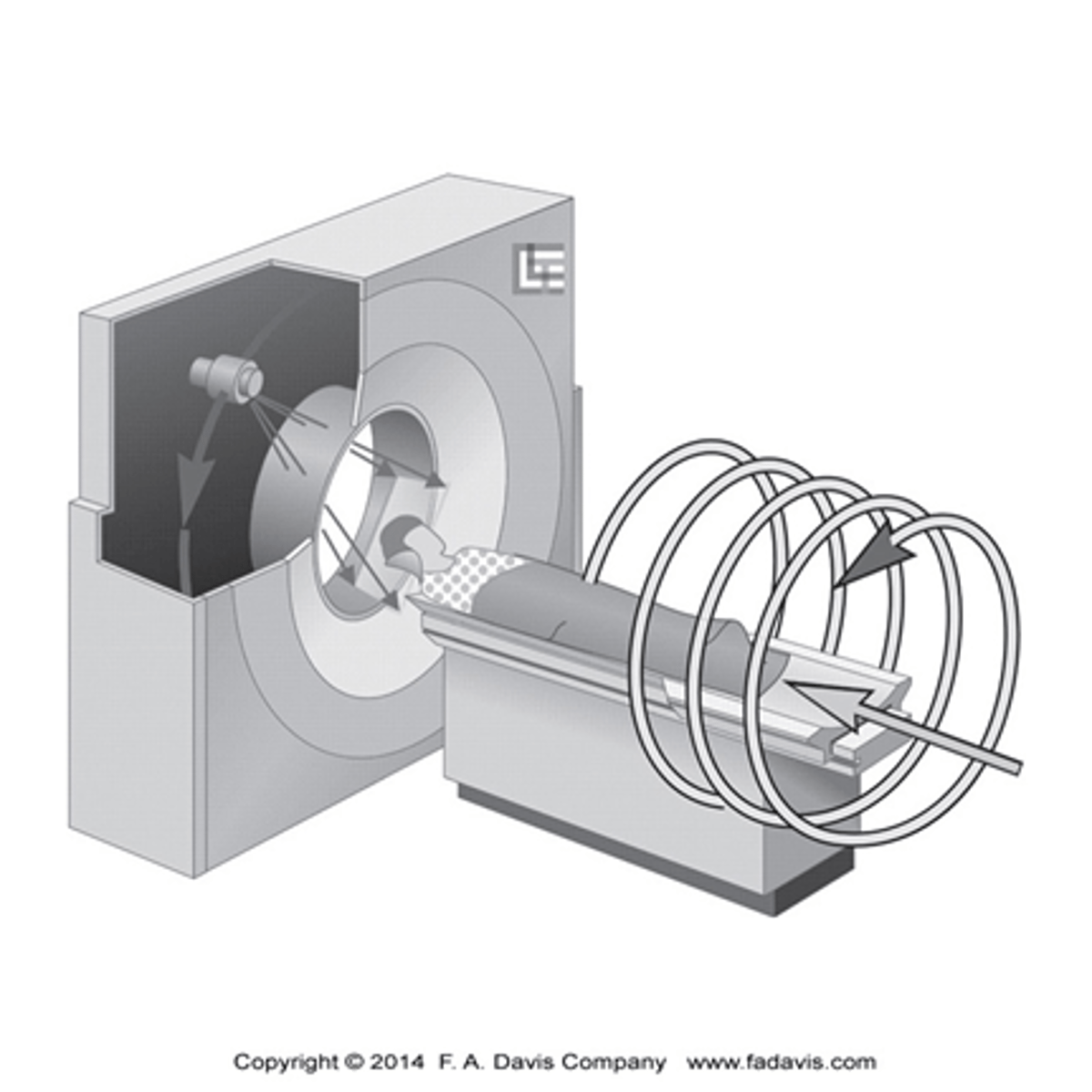
How is CT imaging different than X-Ray?
- It can create images in all 3 orthogonal planes (axial, sagittal, coronal)
- Because the human eye cannot see thousands of shades of gray, a technical "window" is set to display a range of radiodensities based on the tissue being examined
Ex: A very narrow window can be set to distinguish gray matter from white matter.
Ex: In MSK Imaging, a bone "window" is set to distinguish cortical bone from cancelloous bone
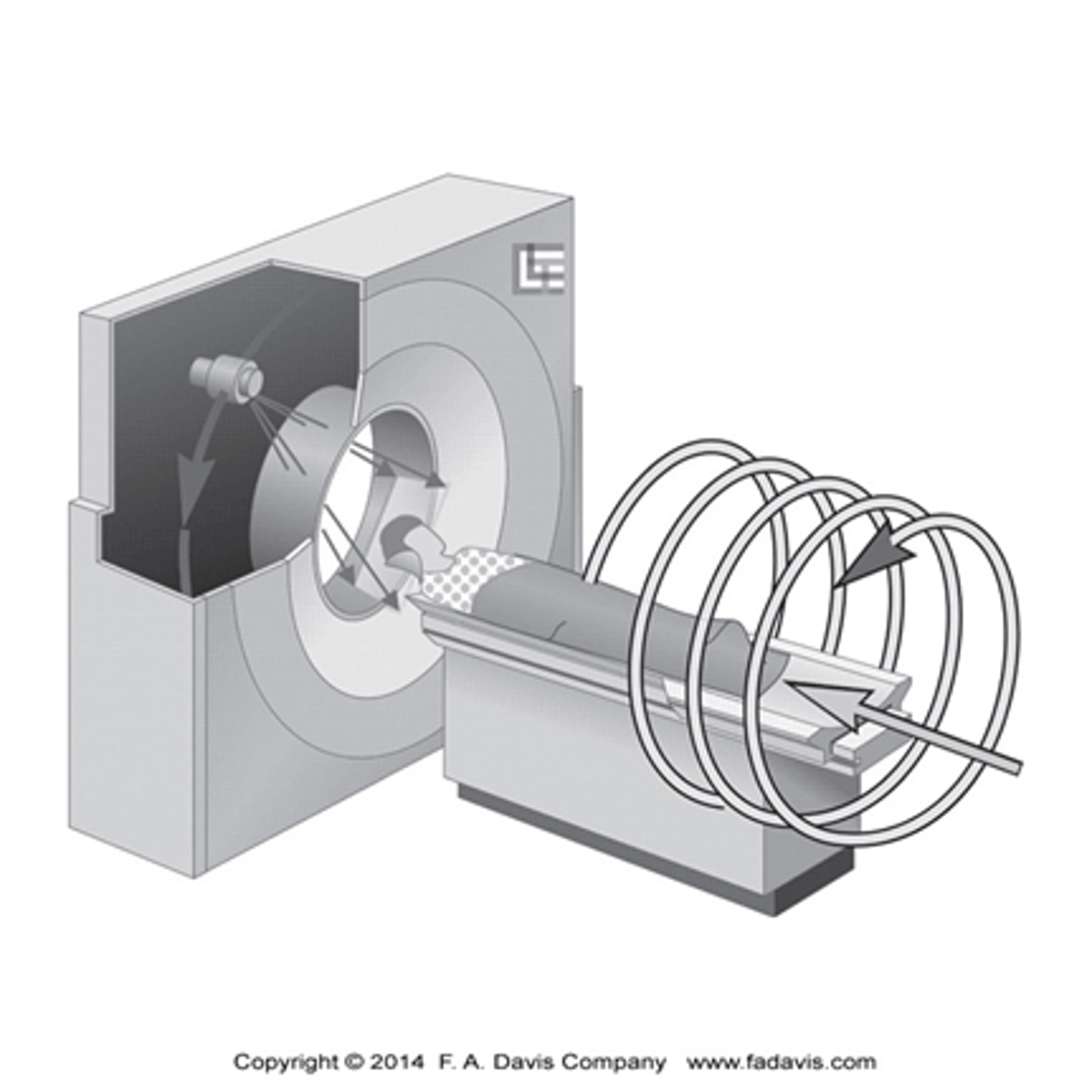
How is CT Imaging the same as X-Ray?
Each pixel is assigned a shade of gray to correlate with the radiodensity of the cubic volume of the tissue it represents
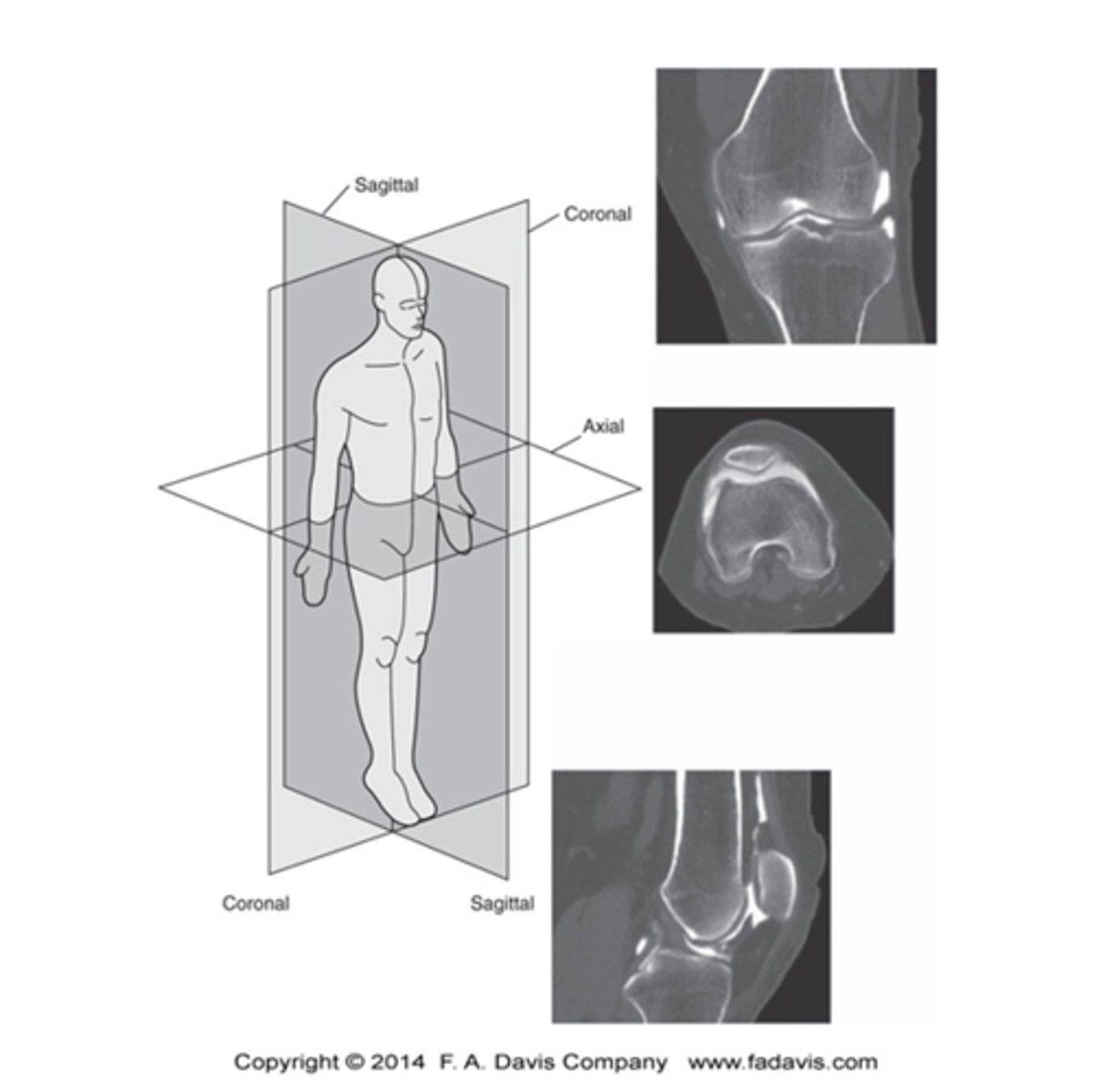
What is the Hounsfield Unit (HU) unit?
An HU is a measurement of tissue radiodensity
What are the HU for Air, Fat, Water, & Bone?
- Air (-1000HU) Black
- Fat (-84 HU) Gray-Black
- Water (0 HU) Gray
- Bone (+3000 HU) Gray-White
How many shades are the major tissues represented as?
Four shades
What type of resolution is improved with thinner slices and small pixels?
Thinner slices and smaller pixels improve the "spatial resolution"
- Thin slices require greater radiation, increased number of slices, and total duration of imaging time
What do thin slices require? (3)
- Greater radiation
- Increased number of slices
- Total duration of imaging time
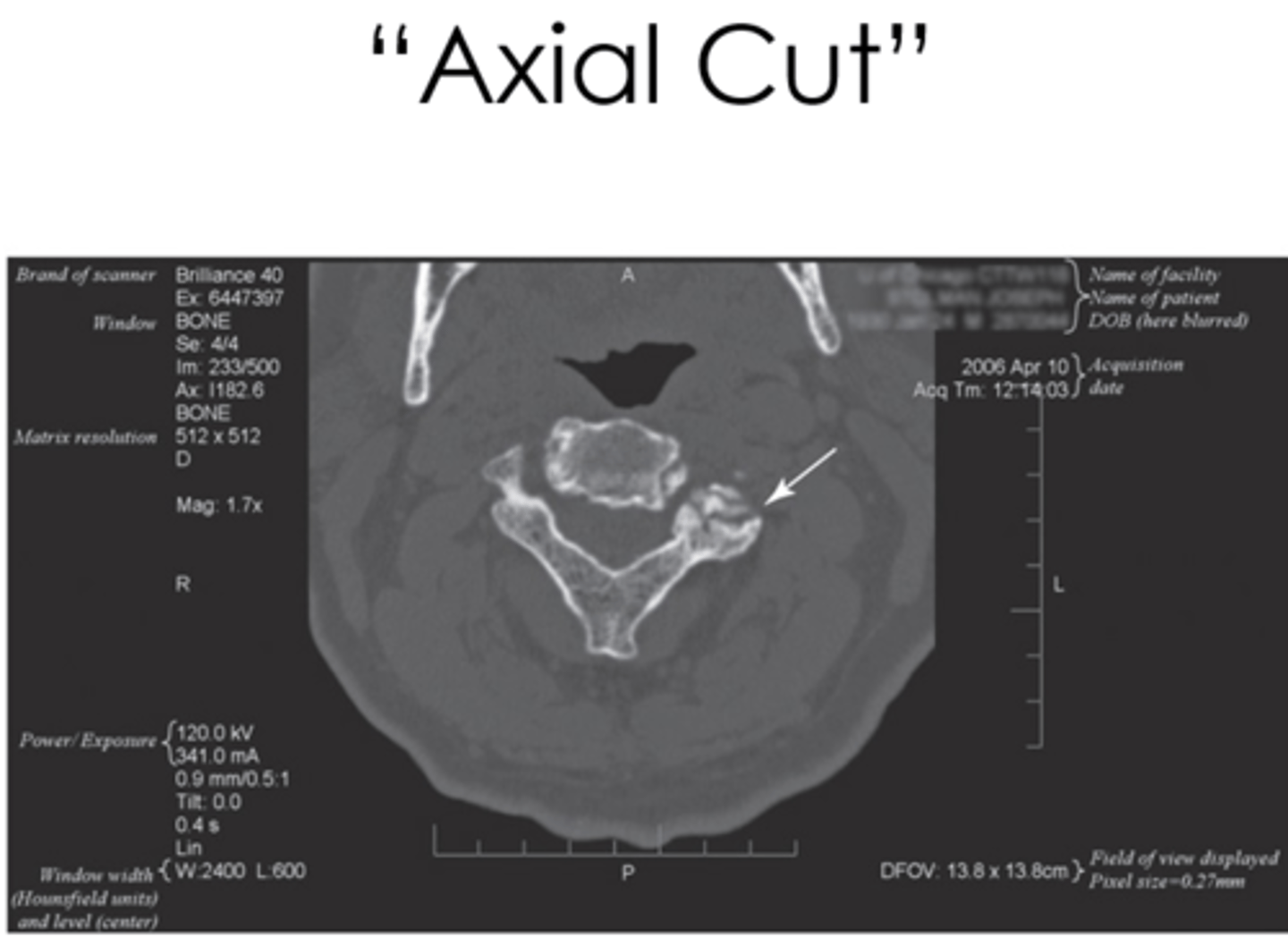
What type of resolution is improved with thicker slices and larger pixels?
- Thicker slices and larger pixels improve contrast resolution
- Therefore, slice thickness is a compromise between good spatial resolution and exam time
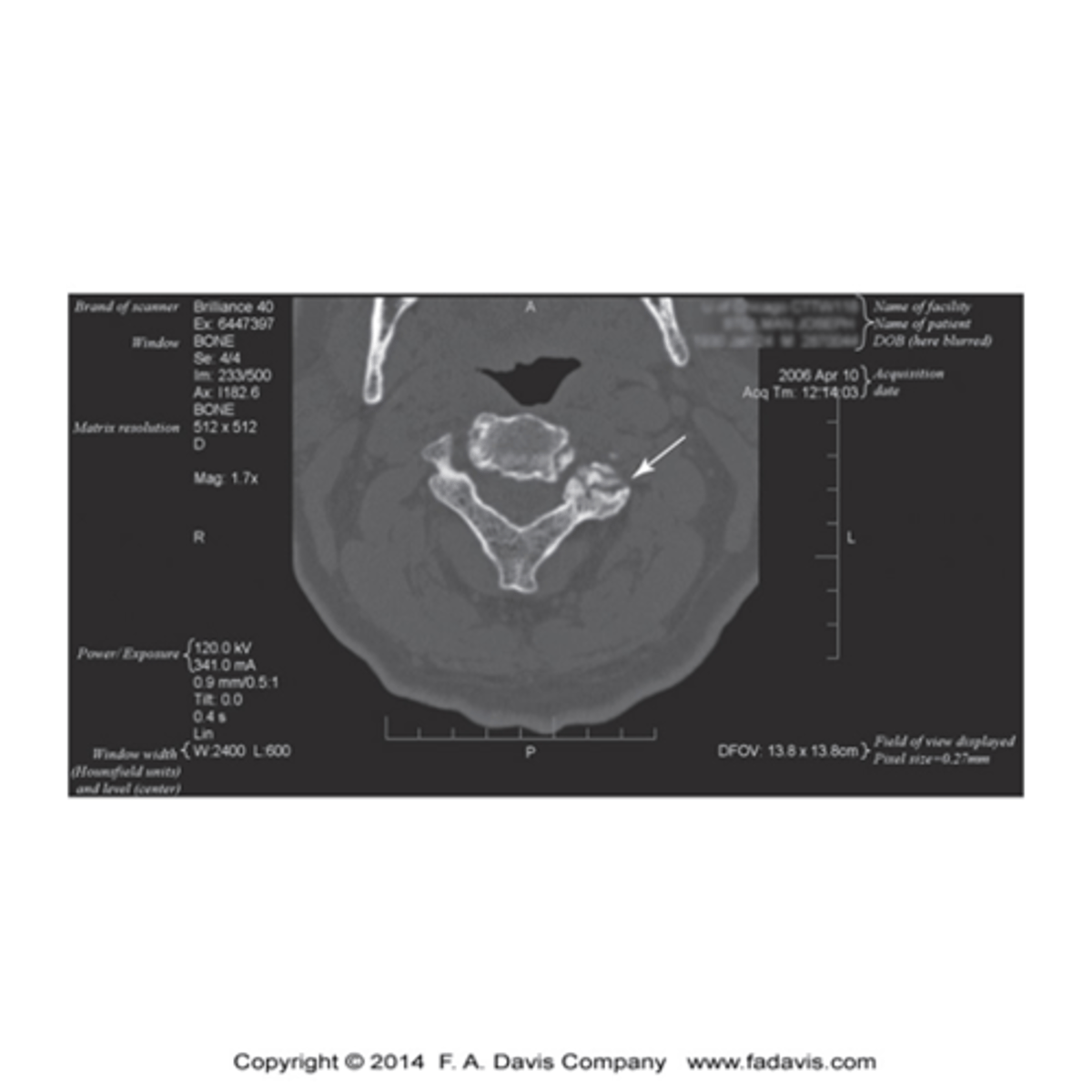
What tissue is best represented in a CT Scan?
It is a highly detailed depiction of normal anatomy and pathological process in cross section especially for bone and joint space
What is the imaging modality of choice in the acute setting with trauma?
CT is the modality of choice for neuroimaging in acute settings and in cases of trauma
What are the three characteristics the CT scans highlight in the human body?
- Cell density
- Fat
- Fluid Content
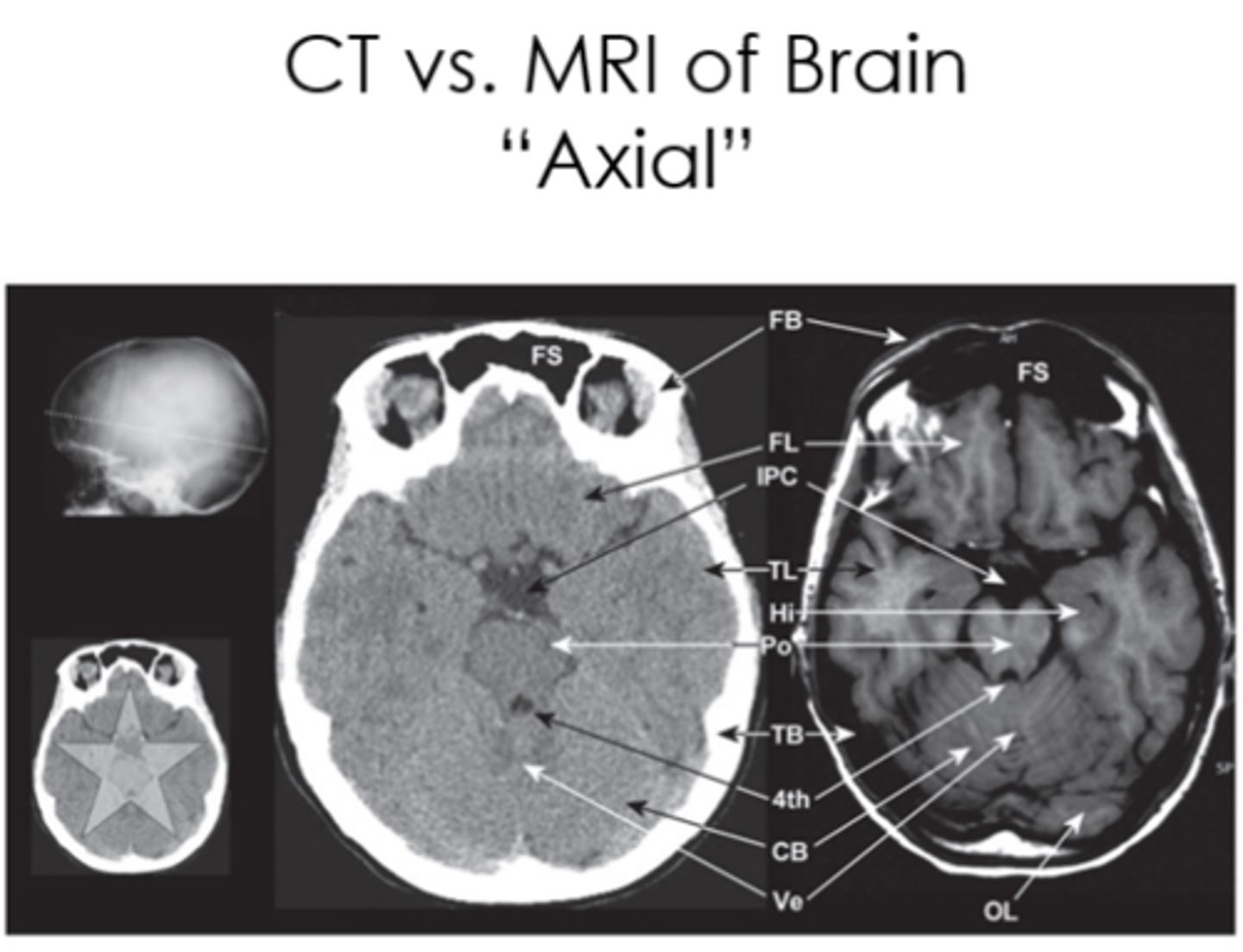
What are the advantages of CT?
- It is a highly detailed depiction of normal anatomy and pathological processes in cross section
- It is less time consuming than MRI or US
- Allows for accurate measurements of osseous alignment in any plane
- It is usually less expensive than MRI
- It is less problematic than MRI for patients with claustrophobia
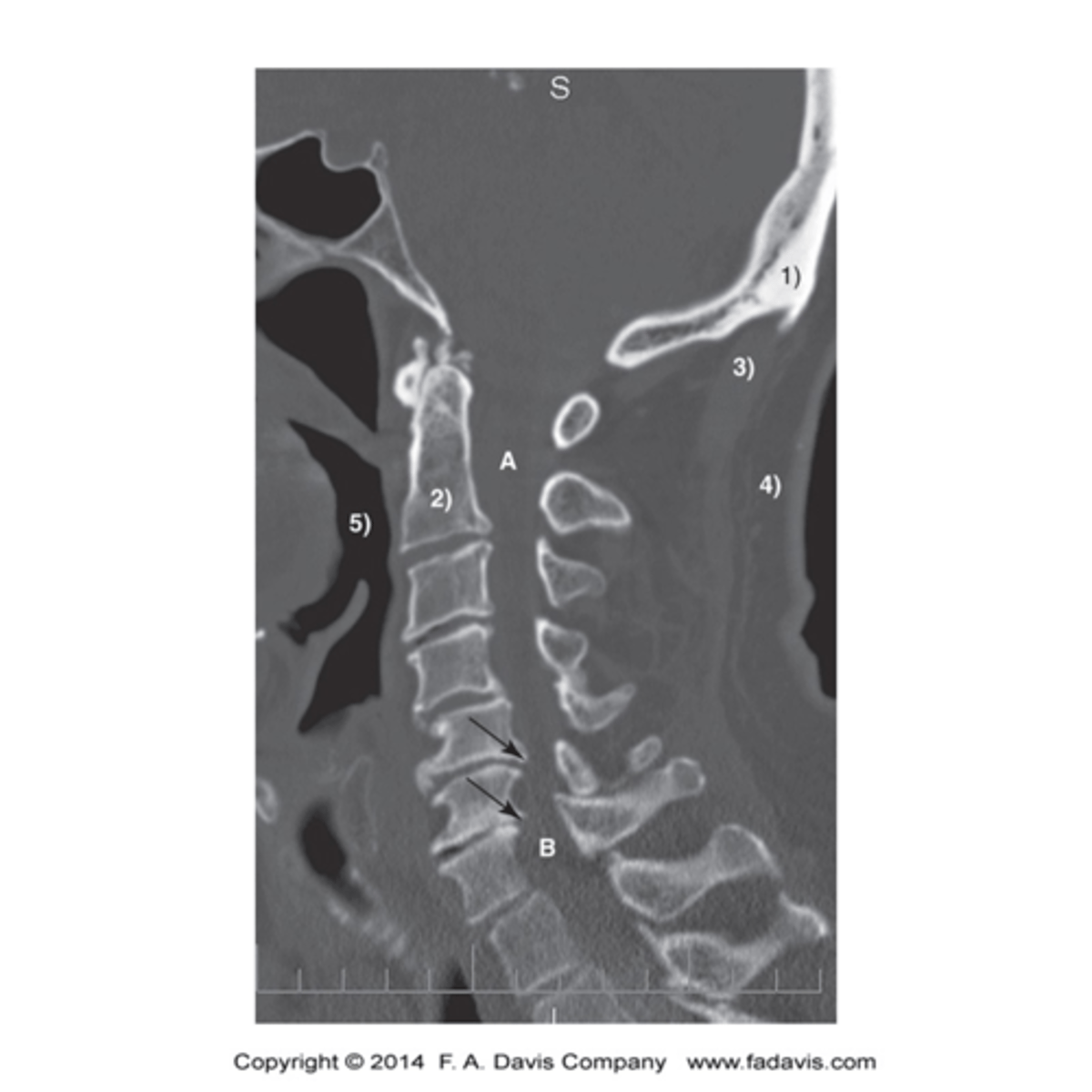
What are the disadvantages of CT?
- It is a high radiation exposure relative to most conventional radiographic exams
- Has less soft tissue contrast than MRI
- Is possible to have static versus dynamic examinations with diagnostic ultrasound
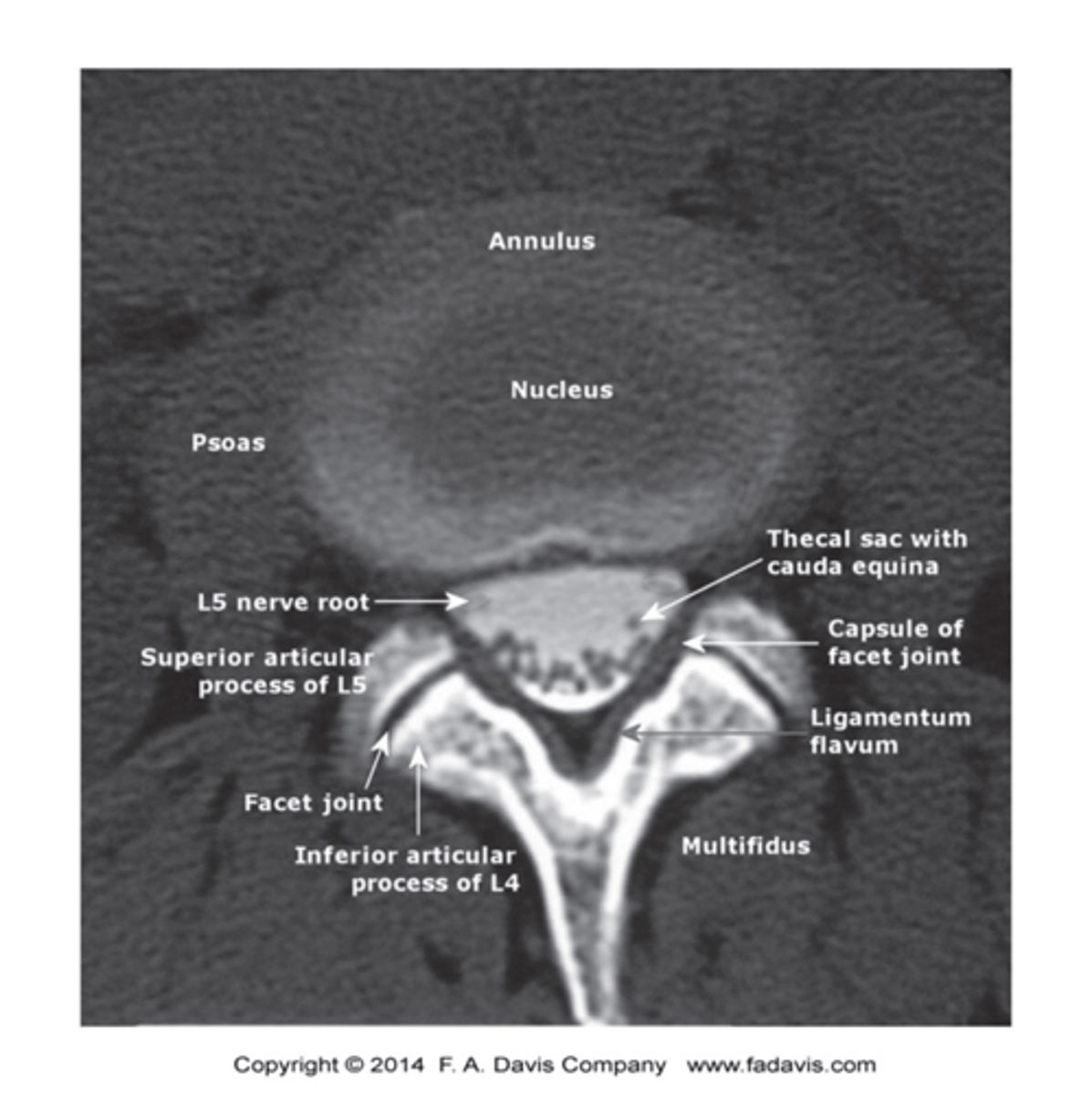
Are there any contraindications for CT and why?
- CT imaging has no absolute contraindications.
Relative contraindications are related to the radiation dosage
What are the contraindications for CT with contrast?
- Contrast-induced nephropathy
- Allergy to iodinated contrast
